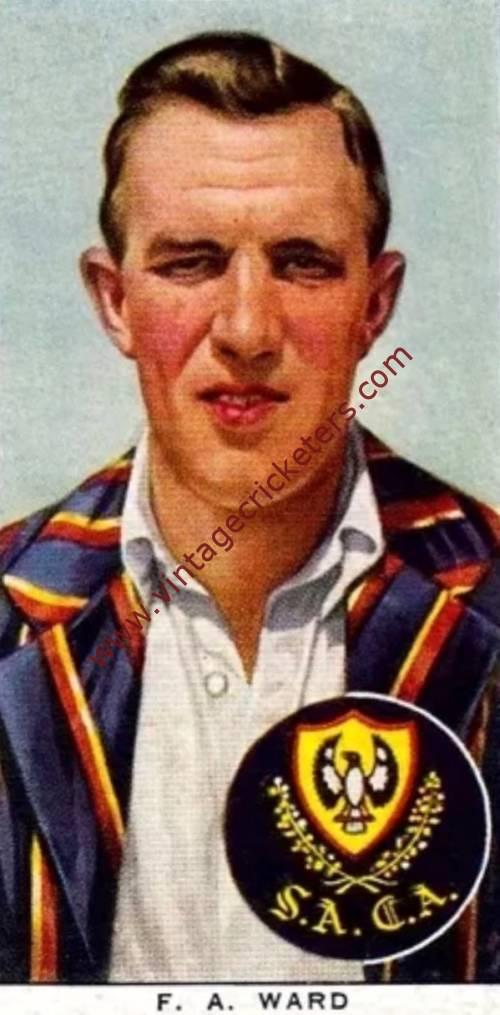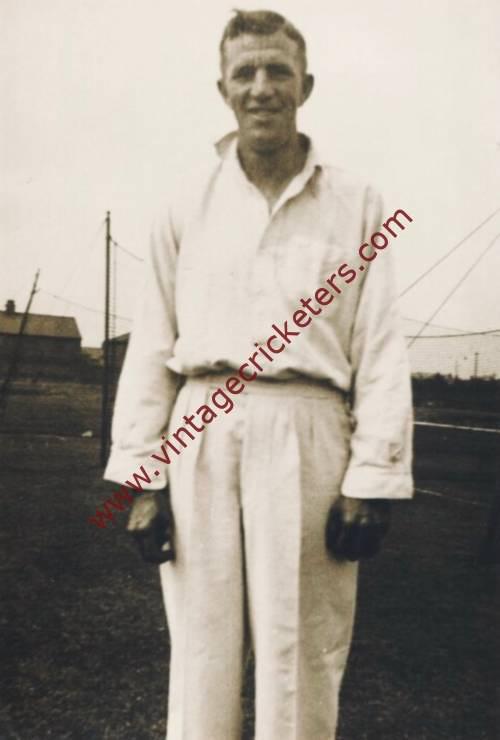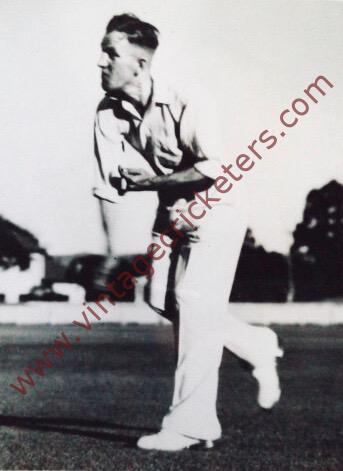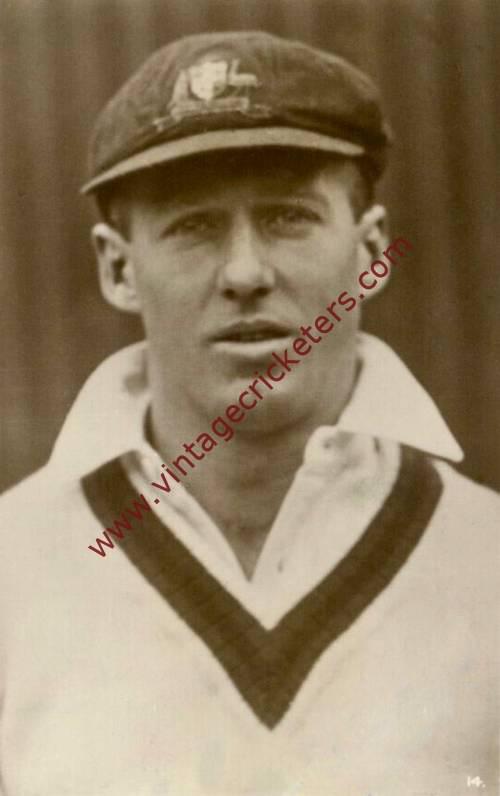Please choose your photo size from the drop down menu below.
If you wish your photo to be framed please select Yes.
Note: 16″x 20″not available in a frame.
Images can also be added to accessories. To order please follow these links
£8.95 – £49.95
Please choose your photo size from the drop down menu below.
If you wish your photo to be framed please select Yes.
Note: 16″x 20″not available in a frame.
Images can also be added to accessories. To order please follow these links
The maximum number of views of this element is reached.
Please contact the webmaster to enable unlimited views.
Lincoln, Canterbury, New Zealand born right-handed batsman Walter Hadlee went to school with Curly Page, Bill Merritt and Ian Cromb and captained his school team before he made his first class debut for Canterbury in 1933-34. Hadlee averaged over 50, and 94 in his second season; he eventually scored 10 centuries for the Province, playing 44 matches for Canterbury before retiring in 1951-52, having scored 3,183 runs at an average of 43.60. Hadlee averaged over 50, and 94 in his second; he eventually scored 10 centuries for the province. Hadlee played 44 matches for Canterbury before retiring in 1951-52, having scored 3,183 runs at an average of 43.60. His highest score for Canterbury was 194 not out.
After playing against touring M.C.C. teams, Hadlee made his Test debut for New Zealand against England at Lord’s in 1937, he made 1,225 runs on tour, including an innings of 93 in the Test at Old Trafford which ended after he trod on his stumps. Tall and elegant, he was known as an upright and attacking opening batsman. He missed the opportunity to play during the Second World War. His short sight prevented him from joining the Armed Forces.
He scored 198 for Otago against the touring Australian team in 1945-46, the highest score of his career, and was appointed captain of New Zealand for the first Test in peacetime against Australia that year. On a rain-affected pitch in Wellington, New Zealand were bowled out for 42 and 54, losing by an innings, and did not play Australia again in Tests until 1973-74.
It was his captaincy of the 1949 New Zealand team to England that proved to be the pinnacle of his playing career. The 1949 team is still cited as one of the finest New Zealand has sent abroad and there were some illustrious names in the side, including Bert Sutcliffe, Martin Donnelly, John Reid, Jack Cowie, Tom Burtt, Harry Cave, Merv Wallace, Verdun Scott, Geoff Rabone and Frank Mooney. During the tour, he scored 1,439 runs, averaging 36 an innings, with two centuries. Out of 35 matches, his team lost just one, to Oxford University, on a rain-damaged pitch, and drew the four Test series 0-0. Hadlee played 19 innings in 11 Tests, scoring 543 runs at an average of 30.16. He was never dismissed in Tests in single figures. His last Test was against England in Wellington in 1950-51. His only Test century, 116, was scored against England at Christchurch in March 1947 as an opening batsman.
As leading English writer John Woodcock noted: “Hadlee was a courageous and enterprising batsman, a popular and successful captain who played his cricket in the sporting manner usually associated with his country”. John Arlott called him a “strategic commander of real ability”.
He retired from first class cricket in 1952 but continued playing senior club cricket in Christchurch for another 15 years, eventually scoring a record 15,391 club runs. Walter Hadlee served New Zealand cricket as player, captain, selector and manager of New Zealand teams, board member, Chairman and President of the New Zealand Cricket Council, and was the first New Zealander to stand as an equal among international administrators. Along the way, Walter Hadlee gained the OBE, then a CBE, and a place in the New Zealand Sporting Hall of Fame.
In his 117 match first class career, he scored 7,523 runs from 117 matches, averaging 40.44, scoring 18 centuries and 33 half centuries. He also took 6 wickets with his occasional medium pace bowling with a best of 3-14, and took 70 catches in first class play.
His sons Dayle, Barry and Richard (Sir Richard) also played for New Zealand from 1969, Richard Hadlee becoming probably New Zealand’s finest ever cricketer.
Vintage Cricketers was founded in July 2019. There are more photographs of this cricketer in the Vintage Cricketers library, which are due to be loaded in due course. In the meantime, please send a message to us using the contact form at the bottom left of this page and we can arrange to prepare and publish all images of this cricketer if you have a particular interest in him.
| Weight | N/A |
|---|



